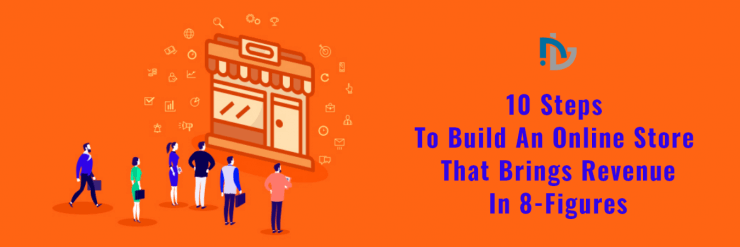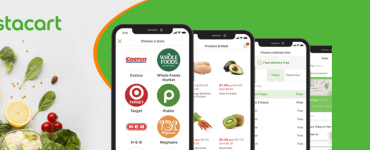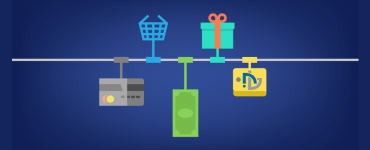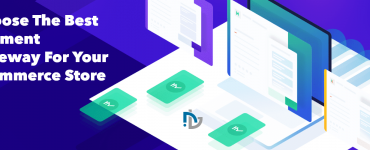What are the first steps to building an online store?
Let’s accept it: The online retail market is saturated. It doesn’t signal there is no room left to explore and experiment for carving out a spot. There are plenty of opportunities that enable budding entrepreneurs to join the gold rush, connect with customers, and secure a position in the market. Post-pandemic, the retail space has witnessed a lot of turbulence and brought unexpected facts in front of us.
What are the first steps to building an online store?
The first steps to building an online store include choosing a platform, securing a domain name, selecting a hosting provider, and designing the website. Additionally, you’ll need to set up payment gateways, determine shipping options, and create product listings.
- The convenience of online shopping has made 46% of new customers try a new brand.
- Mobile shopping accounts for 50% of online sales by 2022.
- The small online stores have registered around 200% growth between 2019 and 2020.
The statistics are showcasing a huge opportunity in the online retail space. However, the favorable opportunity for online stores works only when the online store development solution can differentiate itself. The differentiation journey starts from onboarding and ends with checkout and post-sales services. That’s where the new stores get a chance to create a breakthrough while understanding all the touchpoints and interactions.
The Step-By-Step Guide to Build an Online Store Venture
Create a business plan for Online Store development
There are a lot of things under the Ecommerce umbrella, so you need to do the necessary research to identify the areas to focus on. That’s where SWOT (S-Strengths, W-Weaknesses, O-Opportunities, and T-Threats) analysis helps a ton with product ideas assessments. explore simple steps to build an online store from scratch successfully.
When you are clear with a niche to consider with SWOT analysis, you should go the extra mile with targeted research to find out the industry gaps that are fulfilled by your products or product ideas. Here, social media analysis, Google trends, and reviews of the best-selling categories of the leading marketplaces can help.
To fill the void, the product idea must lie at the intersection point of the customer’s preferences and needs. It requires customer data including- demographics and psychographic data analysis.
Now, you know the market gaps and the products that can meet users’ needs. It’s time to figure out how the target customers want to buy the products so that the business can reach them accordingly. There are different business models- B2C Ecommerce, B2B Ecommerce, selling on the marketplace, DTC, and dropshipping that you can choose to sell the product to your customers.
Domain name selection for our online Store development
The domain name is a unique identity of the businesses that enable customers to easily recall the brand and improve brand awareness. For generating a domain name, you should follow a couple of tips-
- The keyword-rich domain name allows businesses to rank high in SERP. But ideally, the name should be a combination of two words, descriptive, and an experiment can go.
- While experimenting with the domain name, don’t be too creative. Unintentional combos, hyphens, or wrongly spelled words may make the domain name funny or offensive.
- The attempt of experimenting with the domain name should not make it long. You should keep it under 12 characters to make it memorable for the customers.
Selecting the right eCommerce platform
The Ecommerce website builder makes it easy to get an eCommerce store created with a set of native features and extensions. With choices for several platforms’ availability, you can identify the best fit by matching your Ecommerce requirements list with the platform offerings.
Before partnering with any eCommerce platform, you should consider a couple of things that are-
- Don’t consider the cheapest or expensive as the best option.
- Check the scalability feature to ensure the platform allows your business to improve the eCommerce store as it grows.
- Identify the variation in performance when the load on an eCommerce store increases during the holiday season or festive season.
- Create a list of eCommerce requirements and find out the platform which is meeting the need with maximum native features.
- Security stays at the core that builds your brand’s credibility and reputation in the market. Find out if the platform provides an SSL certificate, shares data, and suffered from fraudulent attacks or not. Know more about eCommerce frauds and their solutions.
- Mobile optimization can’t be an afterthought for eCommerce stores. Make your store mobile responsive to improve SEO rankings and gain mobile traffic.
When you are clear with everything in mind, it’s time to see the Ecommerce platforms that can meet your needs. There are various eCommerce website builders such as Magento, BigCommerce, Shopify, WooCommerce, and Wix that can make your store setup and management journey plain sailing. Click here to know more about various eCommerce platforms.
Craft the excellent UI design
Irrespective of the eCommerce platform you choose, they provide a range of design templates, themes, and other design tools that help you get a brilliant design. Depending on your design needs, look to the templates provided by the platform and customize them to get it fit with the business’ branding. The following customizations that you can do-
- Adjust fonts and text sizes according to website design.
- High-quality images and assets are added.
- Decide color scheme.
- Integrate social icons and add branded content.
- Try out new page layouts for innovative designs.
Products added to the eCommerce store development
The products must be easily discoverable with all the categories and sub-categories created. Also, the product page must have a product description, product image, price, reviews, and shipping info. Every part of the product page must be explained as expected.
For instance, the product description must enlist the product features, characteristics, usability, target audience, and benefits that encourage the users to make the purchase. You can hire a professional photographer or capture attractive images of the product for product image upload because images speak louder than words.
Product categories make the product easily discoverable. You can add more categories like- gift categories, or featured brands than general categories to meet the rising demands of the customers. Also, the filters such as Color, Size, Age, or Price range can help in the filtered search.
My two cents: If you are planning to upload the product to various marketplaces as well to diversify the investment. That’s where multi-channel product listing solutions can help you. Click here to know more.
Design an effective shipping strategy
The need for instant gratification has popped up the delivery experience as another concern before eCommerce stores, which is necessary to take into account. The bad delivery experience makes the customer won’t return to the store again. It can be prevented in the following ways.
- Create a shipping policy that communicates the shipping cost, terms, and limitations to avoid any confusion.
- Shipping solutions are integrated after comparing the shipping rates.
- The shipping solution is preferred that’s automatically sending shipping updates and prints shipping labels.
- Keep the shipping solution on priority, that’s easy to integrate and configure.
Ecommerce store marketing
Without a pre-launch promotion strategy, you can’t dream of getting huge traffic on the day of launch. To make your store gain optimal traffic on day one, you should start the preparation at least 30 days before the E-commerce store launch. It starts with prioritizing the E-commerce marketing channels that you can leverage for effective marketing.
- Social platform: Sharing product previews and teasers on social channels such as Facebook, Instagram, Twitter, and Pinterest helps in informing the target customers. Extra discount or special deals-related message improves user engagement in the eCommerce store ahead of its launch.
- Paid advertising: Earning organic traffic is a good approach but paid marketing speeds up the number of clicks, inquiries, and sales because of the targeted marketing. Google Adwords or premium campaigns on Facebook bring targeted traffic that improves conversion rate.
- Influencer marketing: Influencer marketing is a boon for newly launched eCommerce stores that helps in improving brand awareness and engagement. Initially, the stores get good traffic.
- Email marketing: email marketing is a long-term strategy that works well without requiring hefty investment. However, it requires a database, contextual content, and a well-planned strategy in place to make things work.
Launching- a test drive of the online store development
When your Ecommerce is in ready-to-launch form, you should check a slew of things to ensure it performs to the notch when it’s launched. Here’s the checklist-
- Review CTAs on all homepage and landing pages to see how they are working on the mobile screen.
- Verify how payment gateways are performing during processing.
- Check website navigation structure.
- Ensure all the images are high-quality.
- Make sure the product description is not missing.
- Find out if links and forms are working or not.
- The desktop performance renders a similar experience that the mobile screen offers.
Make sure the store operates within laws
There’s a thing that you should never miss at any cost- the store is not breaking any laws. This mistake costs a ton for businesses as they are subjected to heavy penalties. This must be checked before launch and after launch consistently. Irrespective of the product that you are selling at the local, state level, or internationally, the laws are applicable everywhere.
You should check you are selling the products legally. For instance, in some areas of the world, there is a restriction on alcohol selling, which may put your store into jurisdiction.
After the launch, you must check that store has paid the proper taxes to different government nations for selling various items cross-border.
Conclusion
You need a roadmap to create a profitable eCommerce store development. The online store development step-by-step guide has enlisted everything from magical ingredients to important tactics that can help you cook a recipe for success. Want to compliment the retail operations with a new online store? If so, get partnered with the right company that provides exceptional online eCommerce Store Development Services. Still, need help? We are ready to help you.









